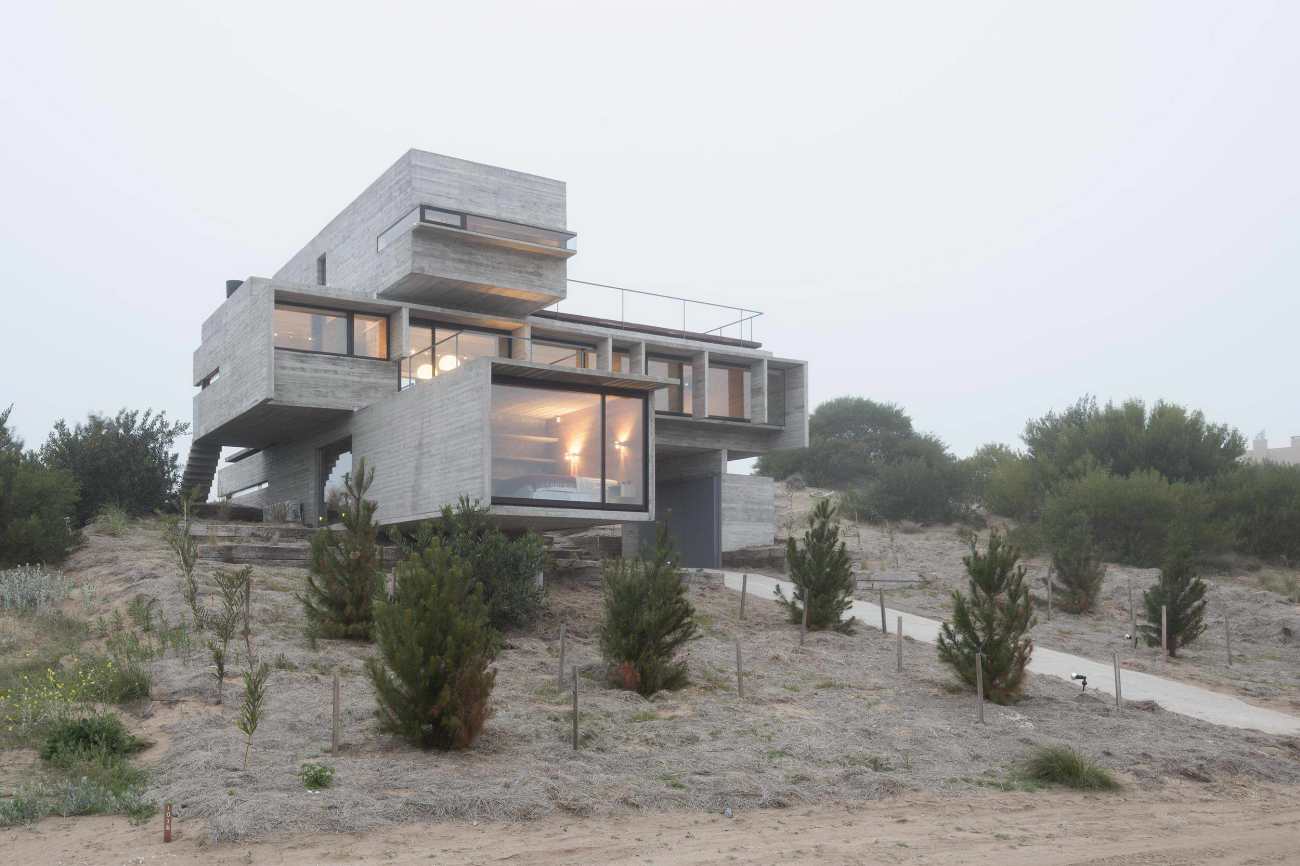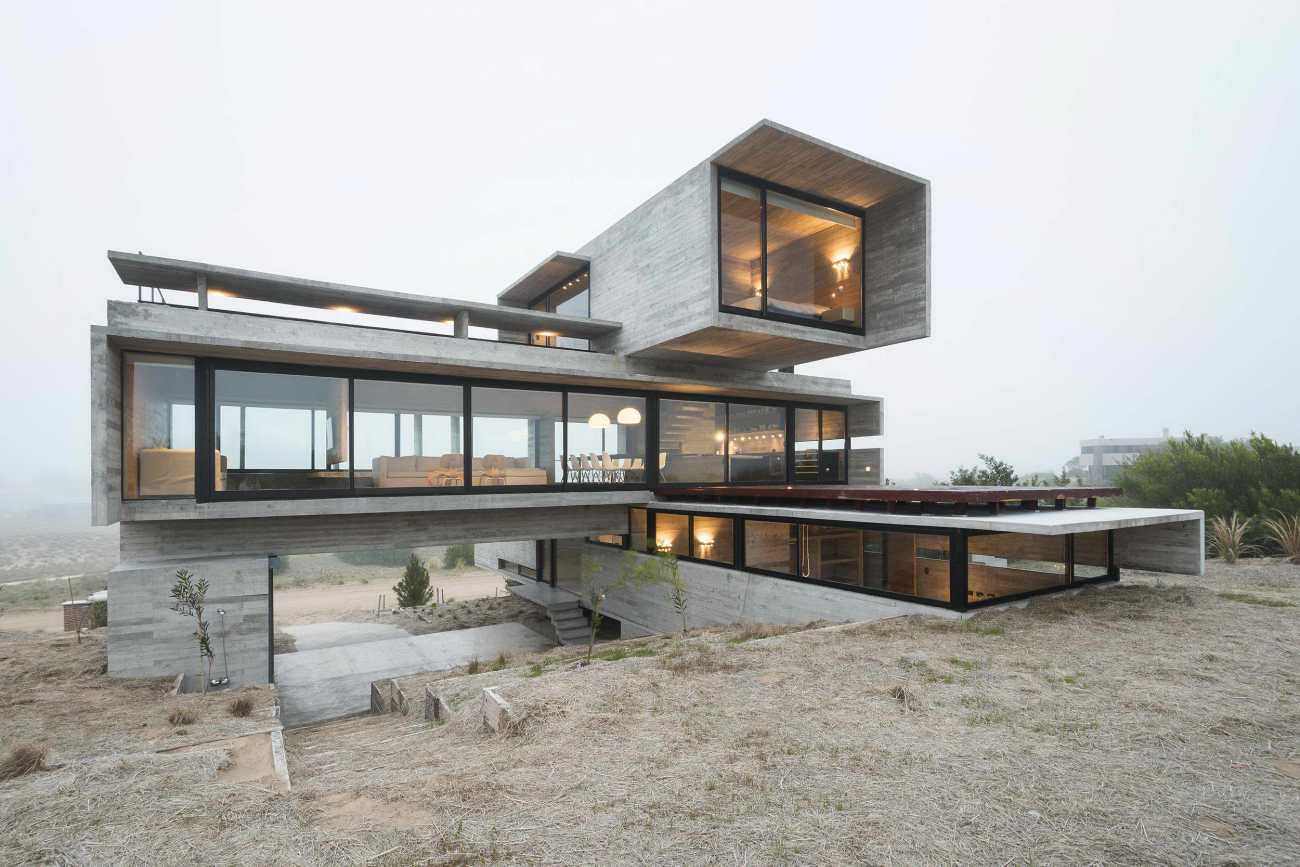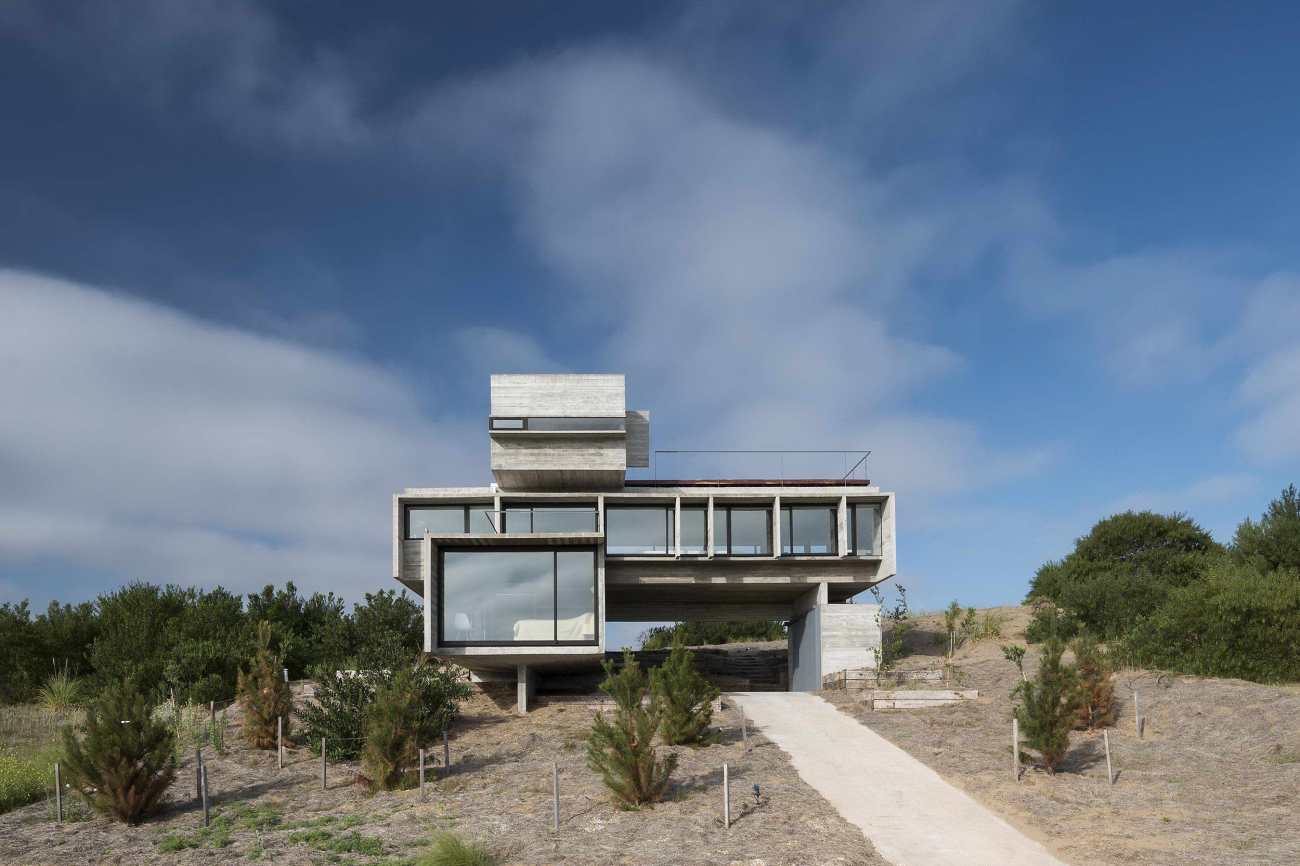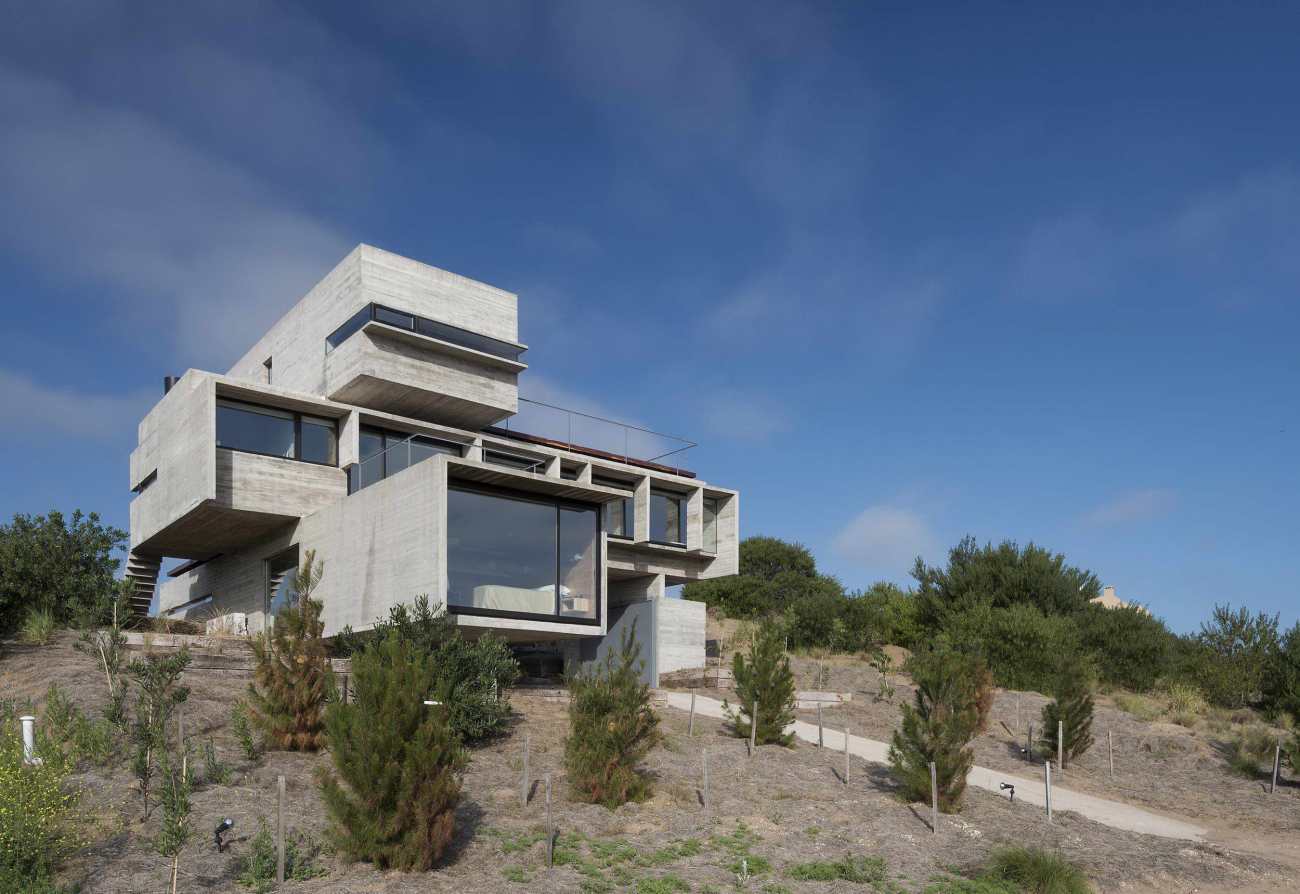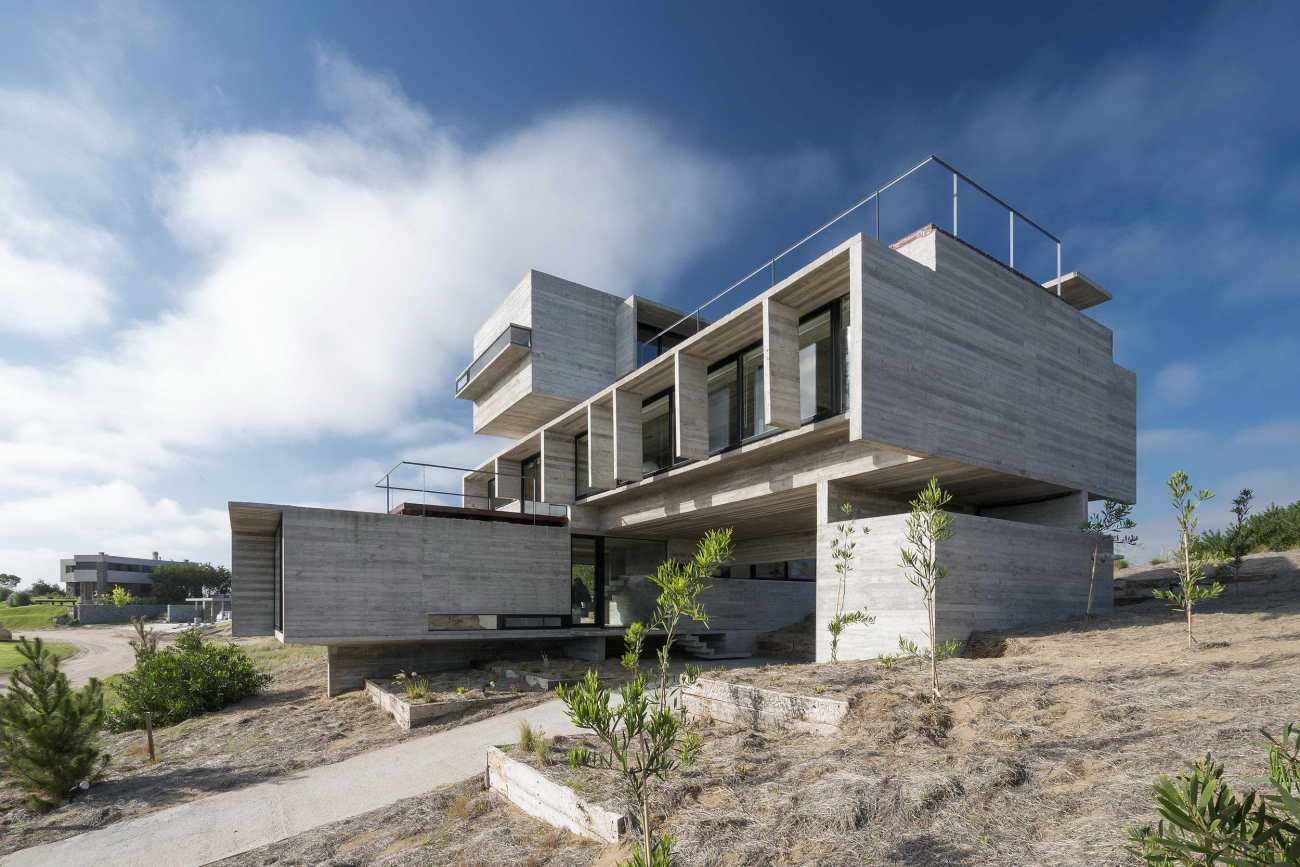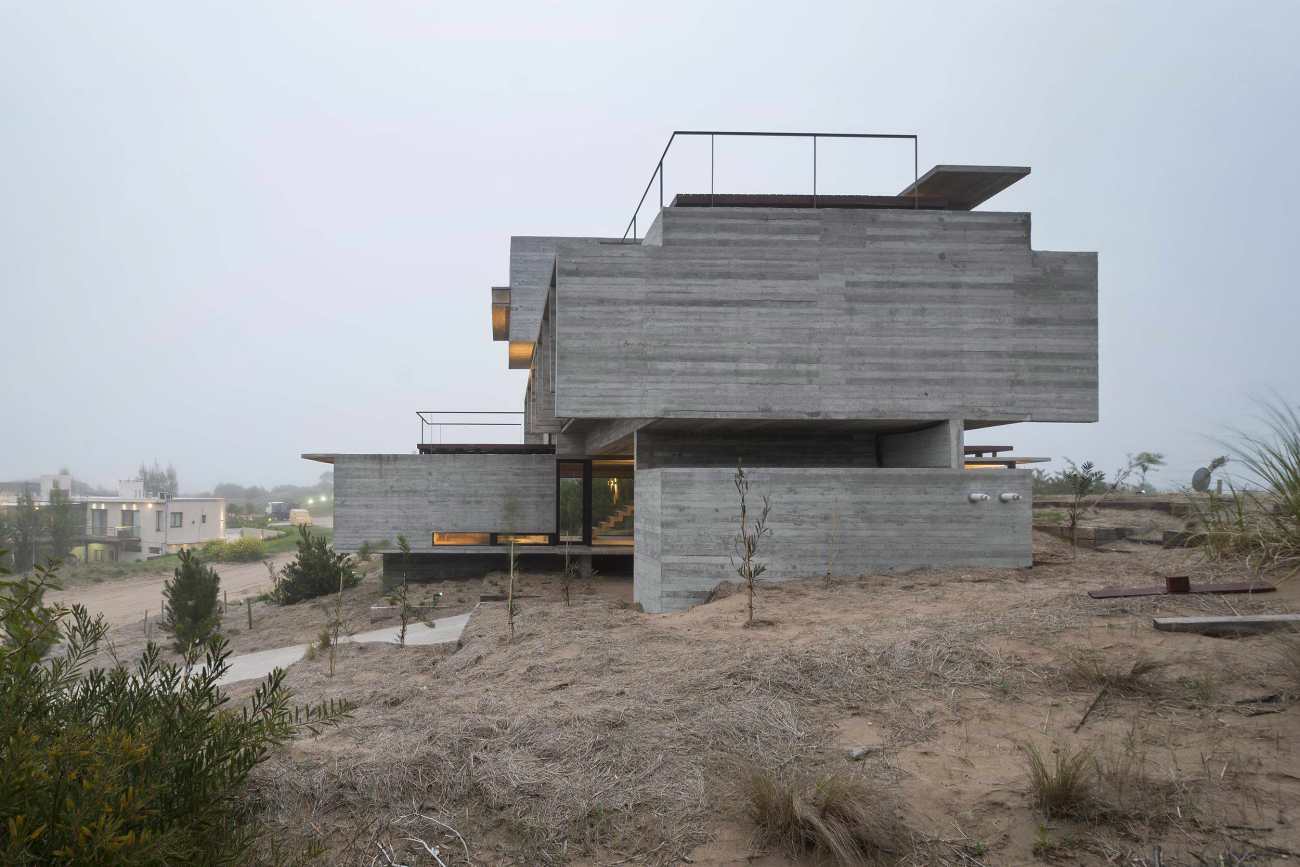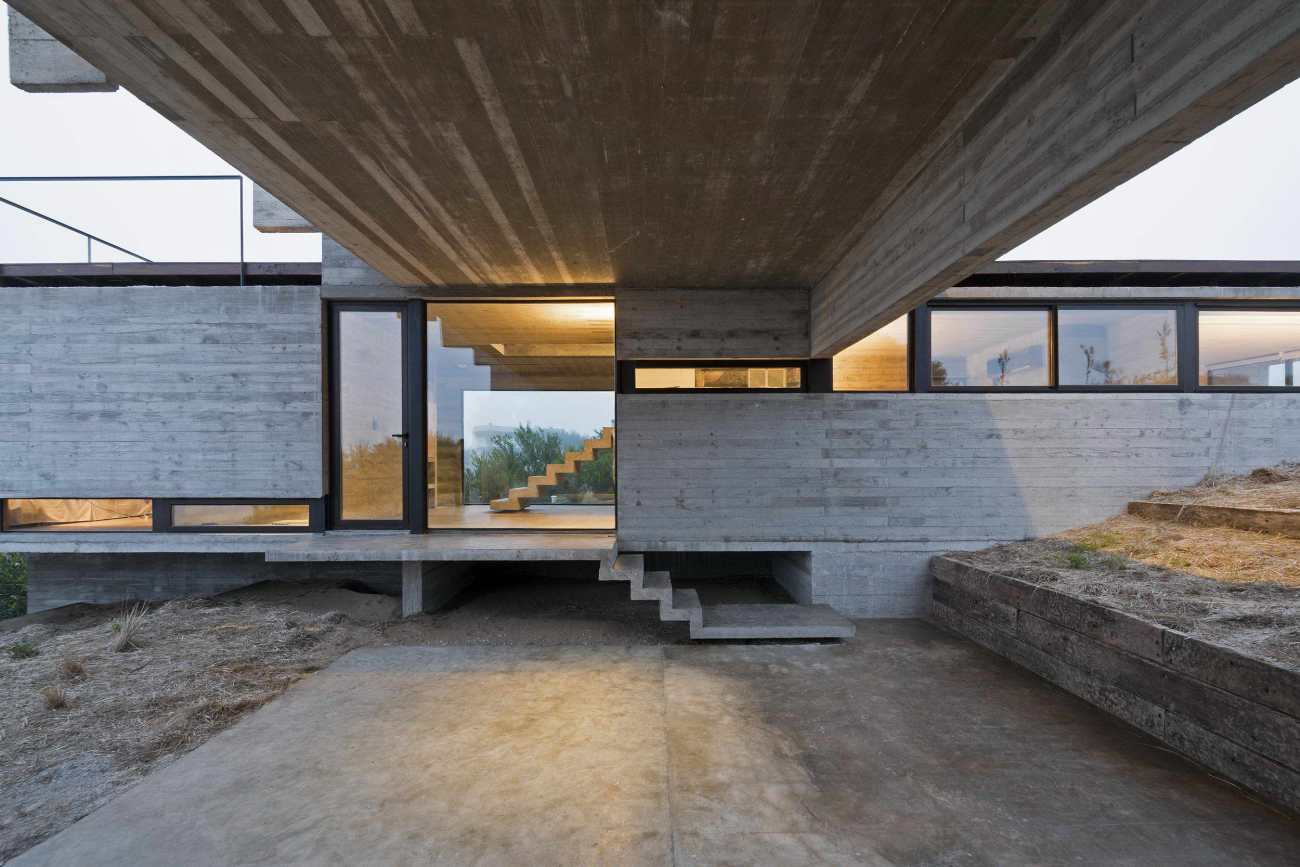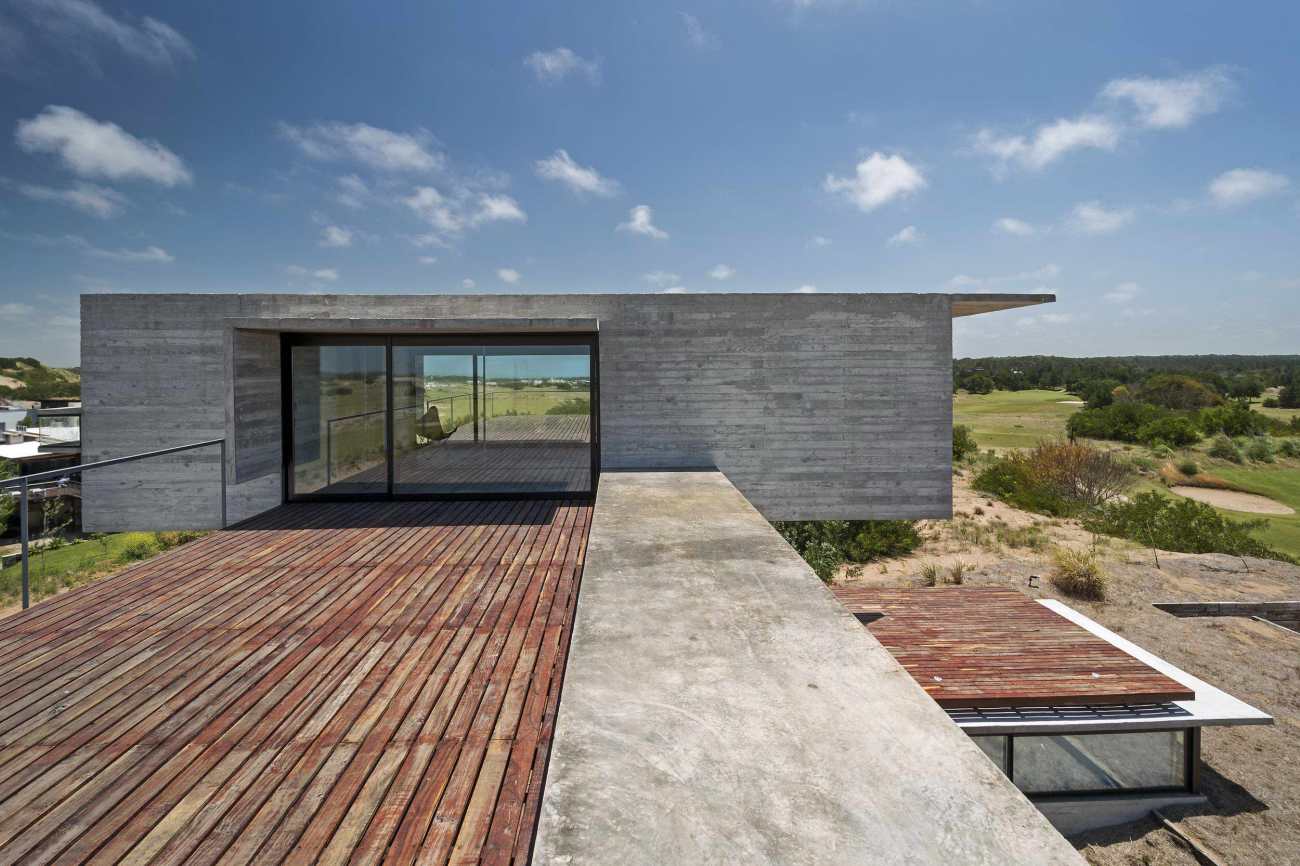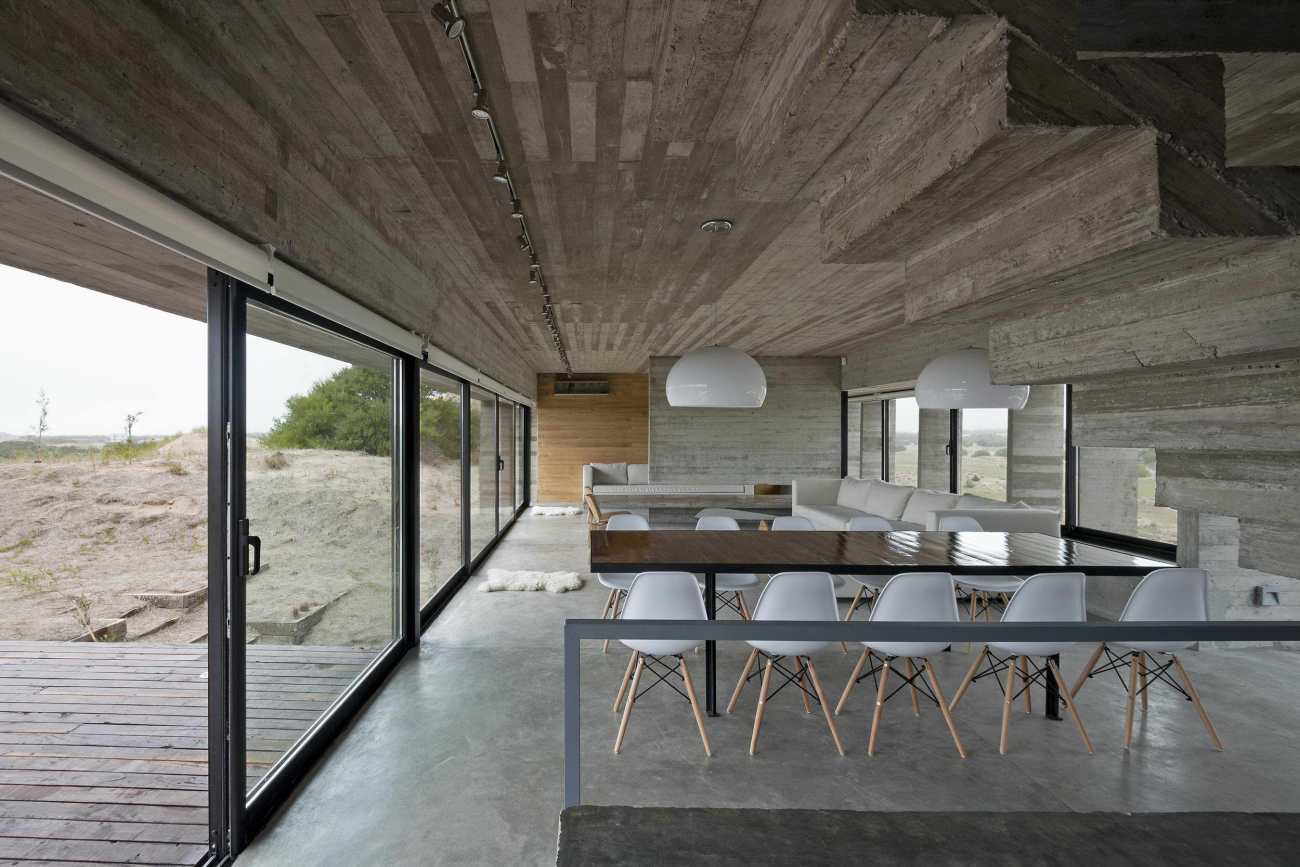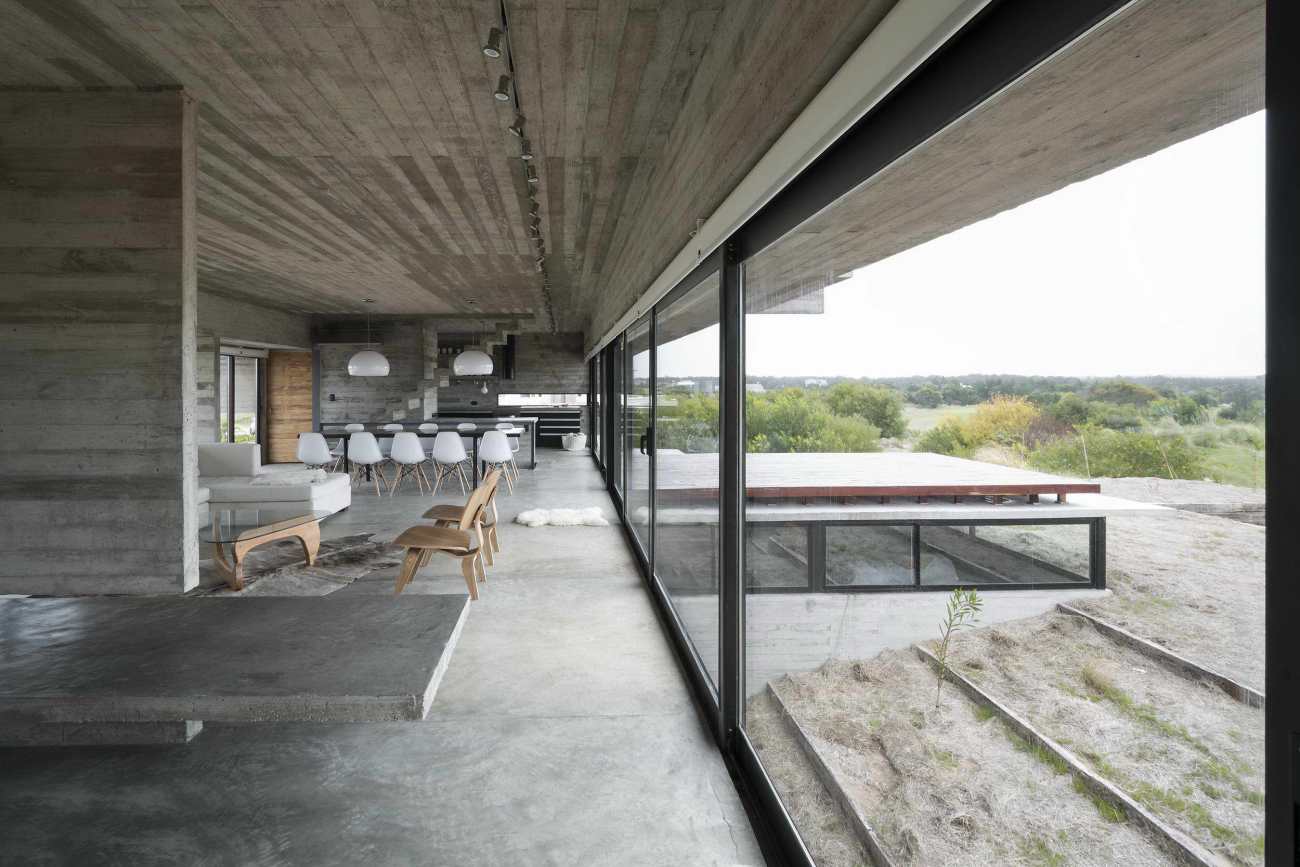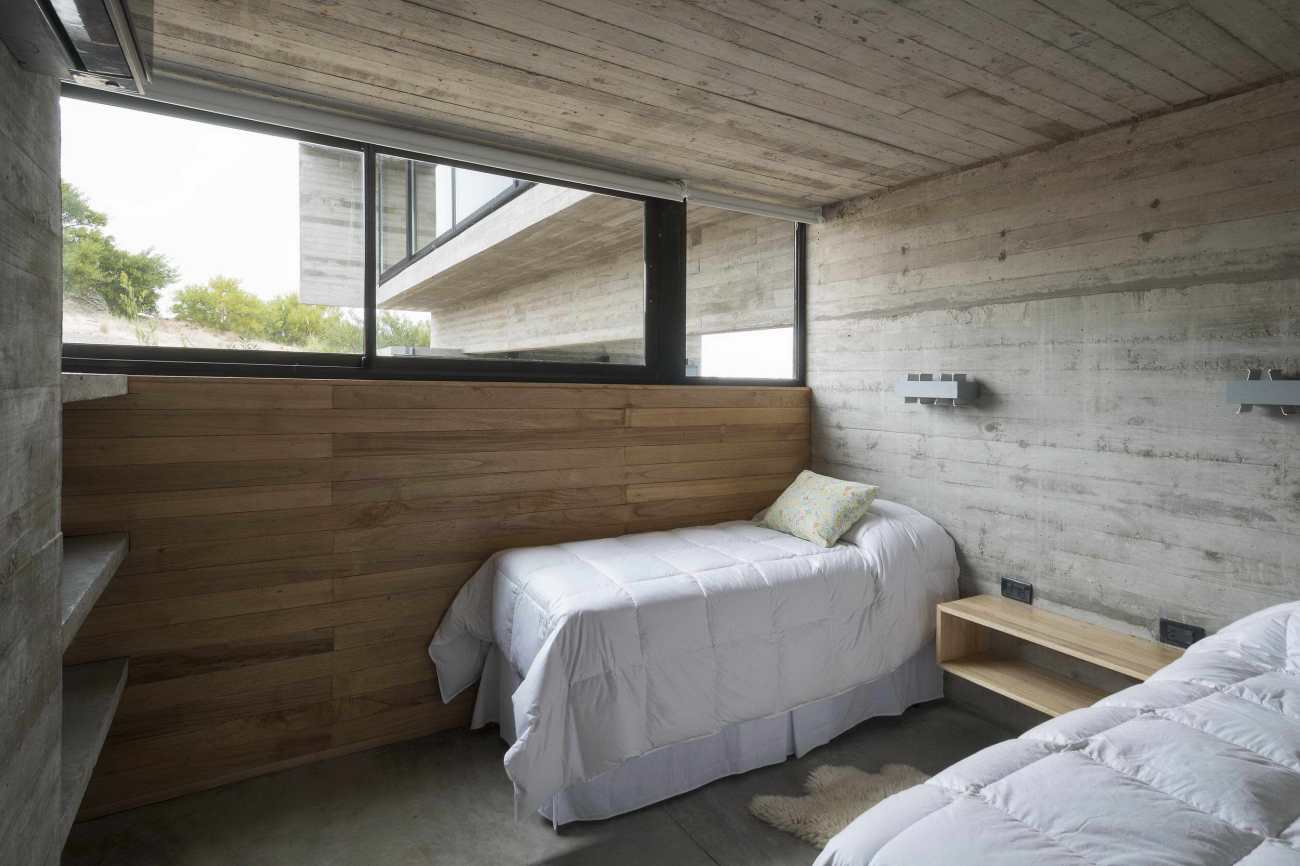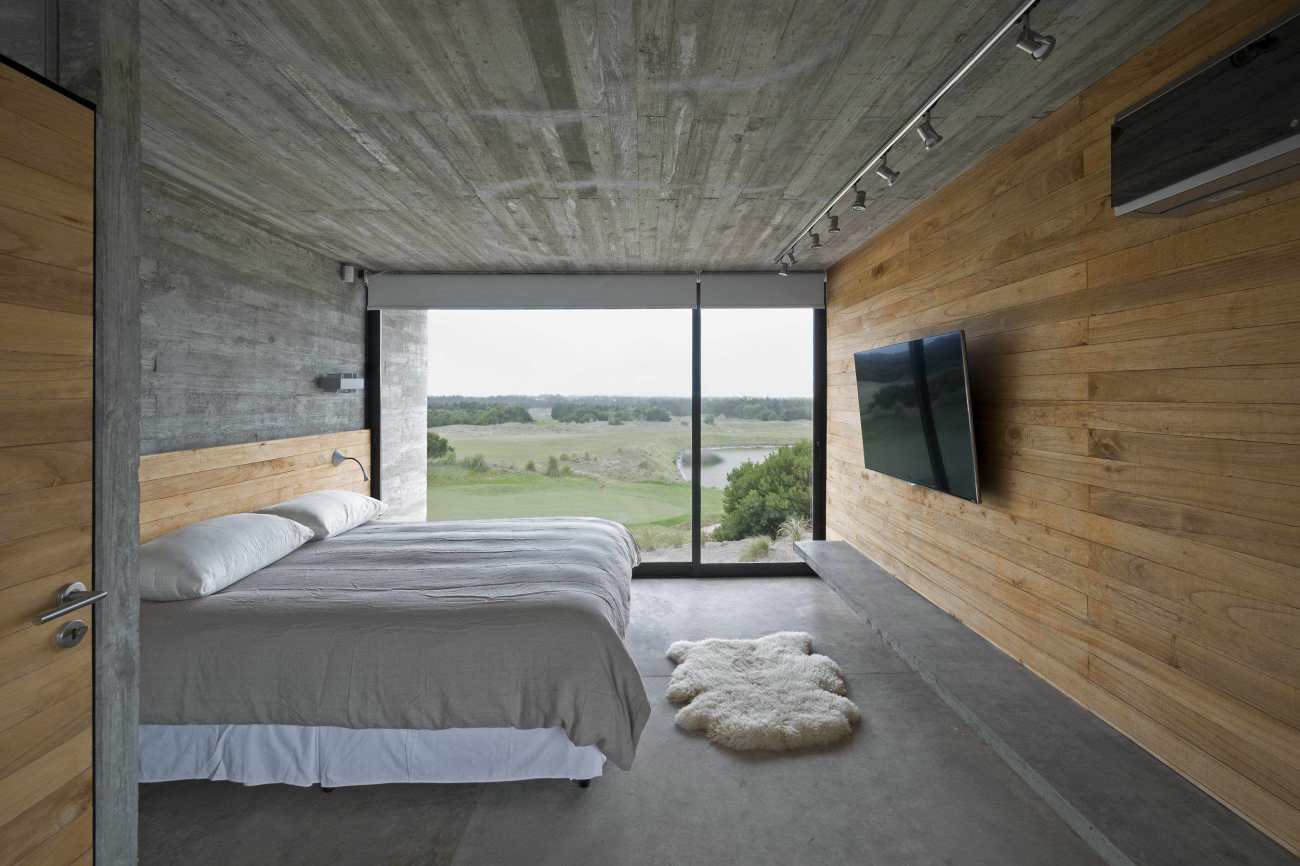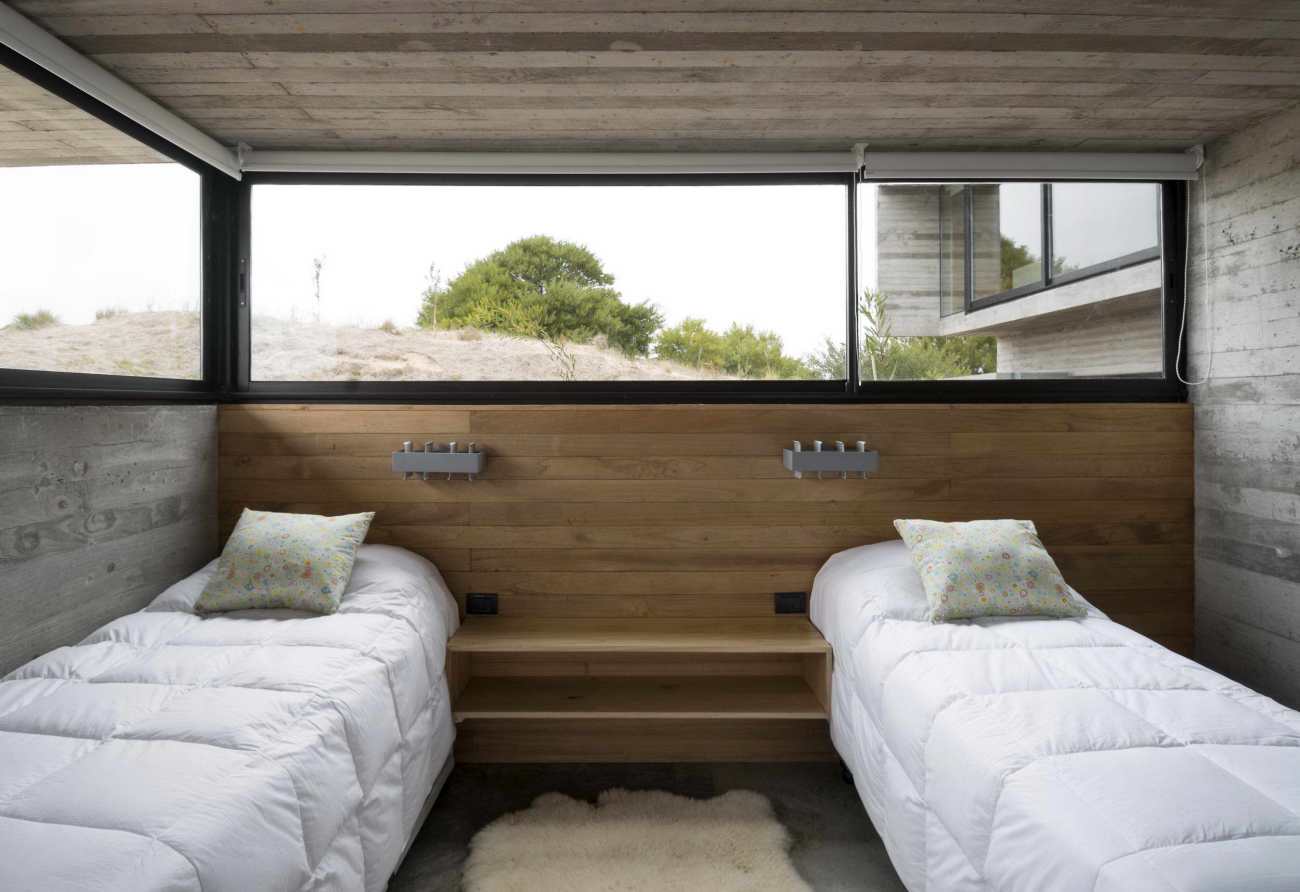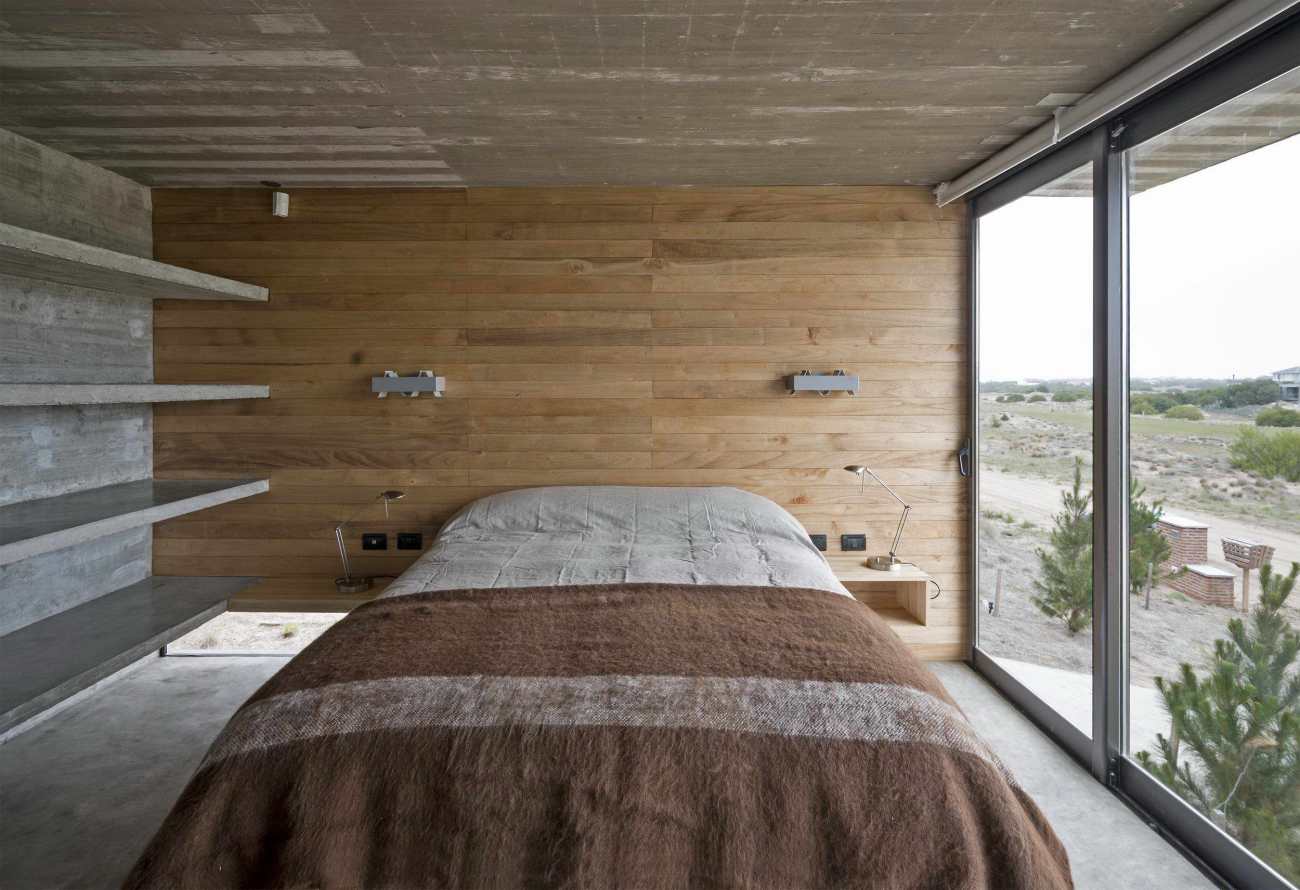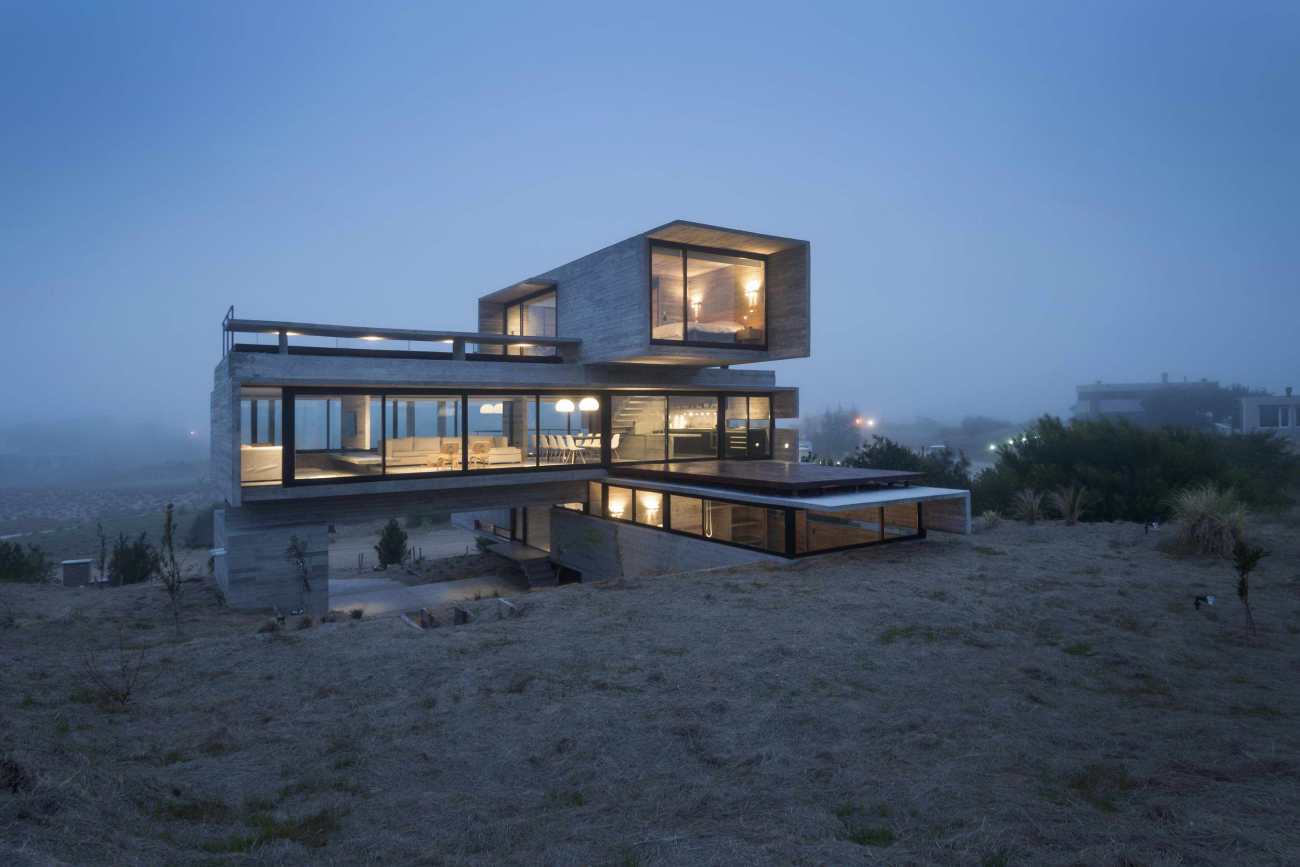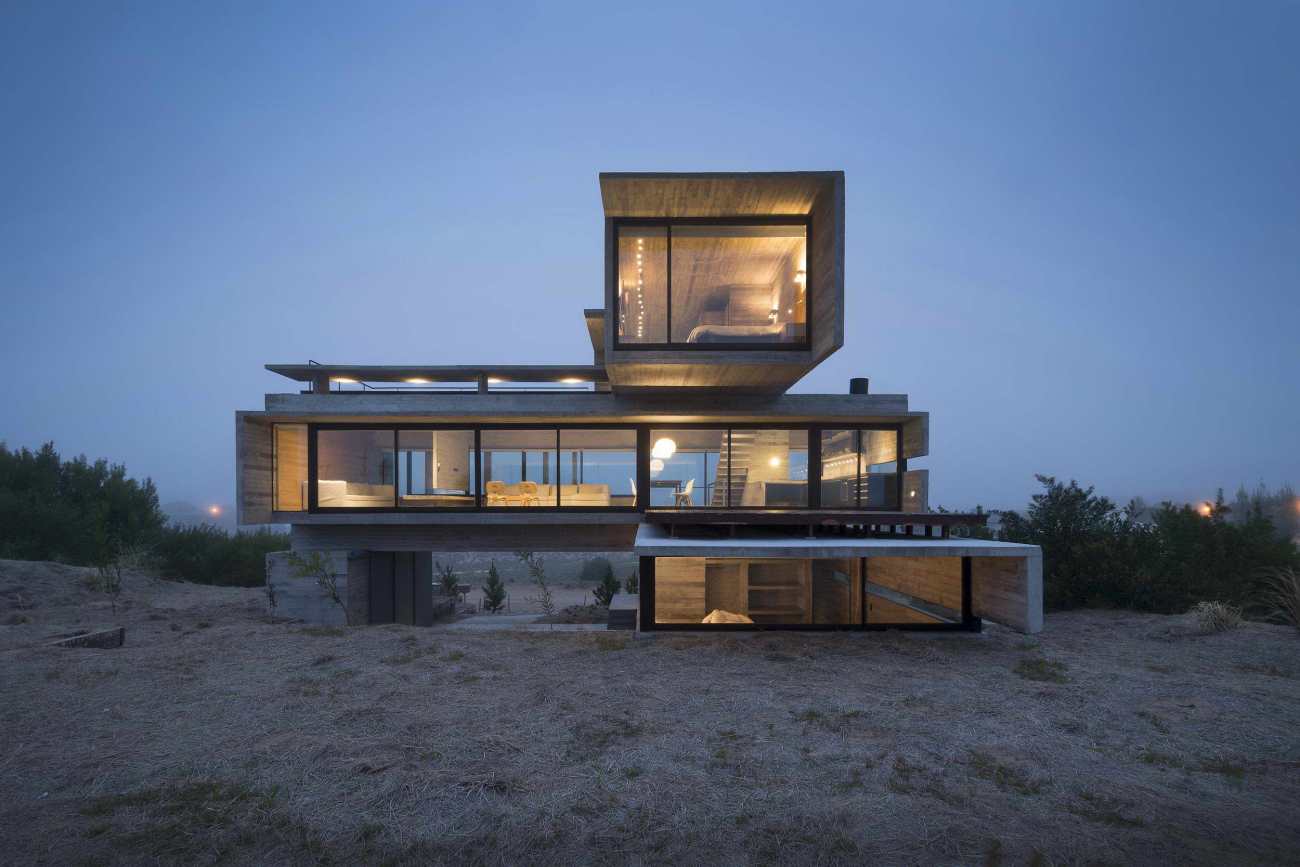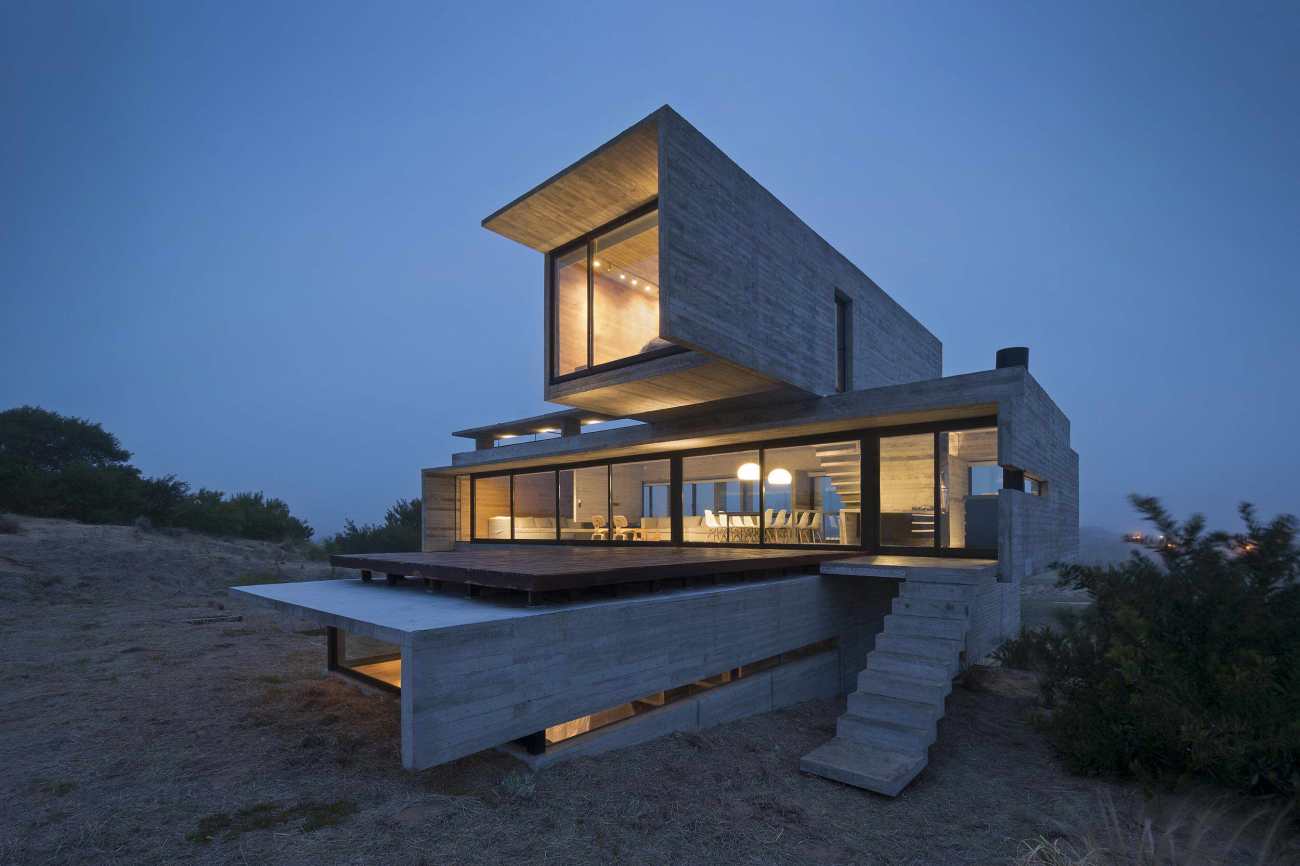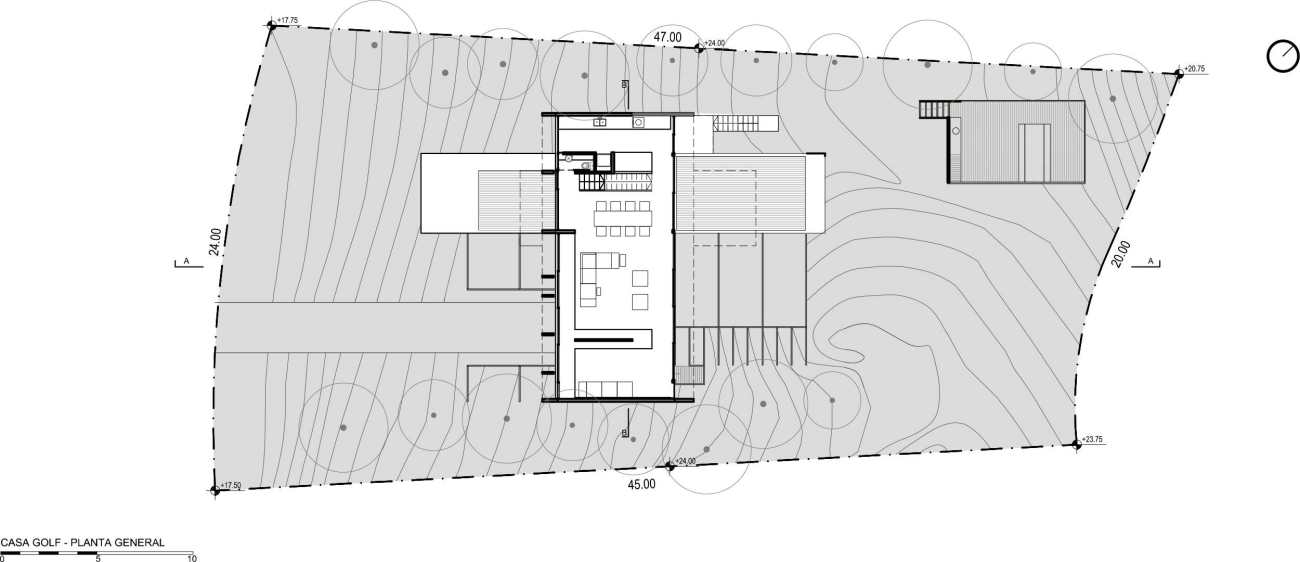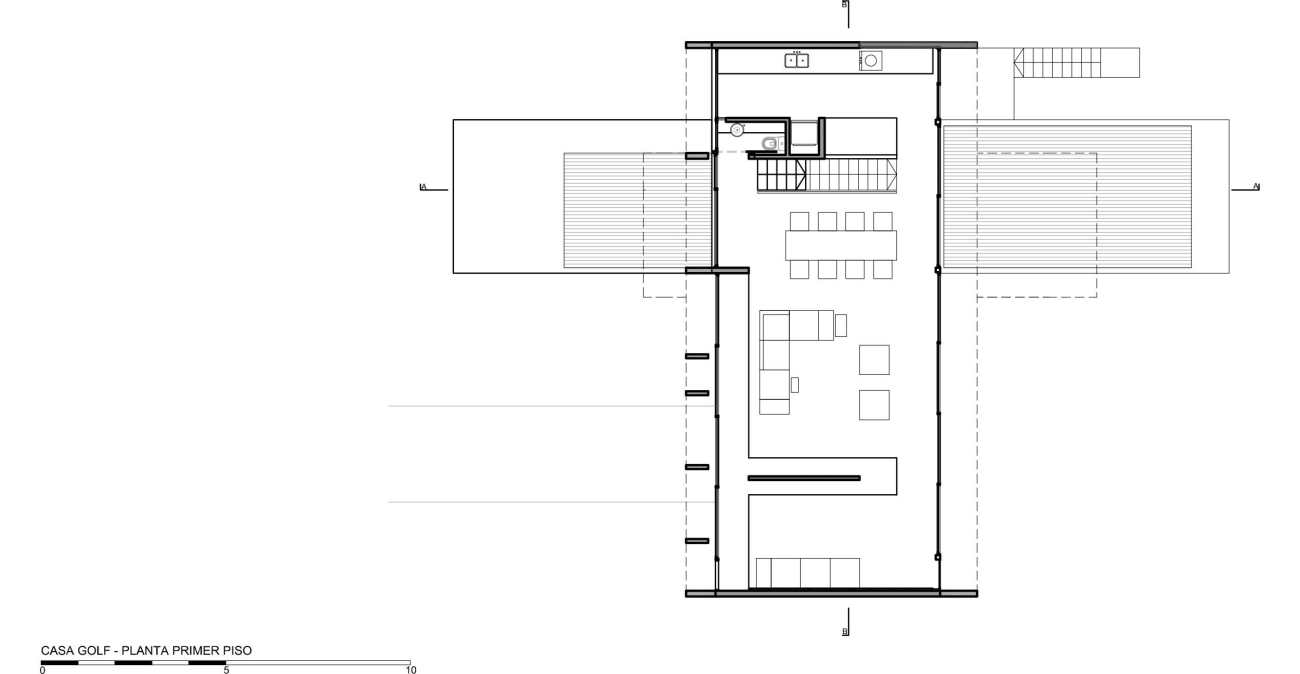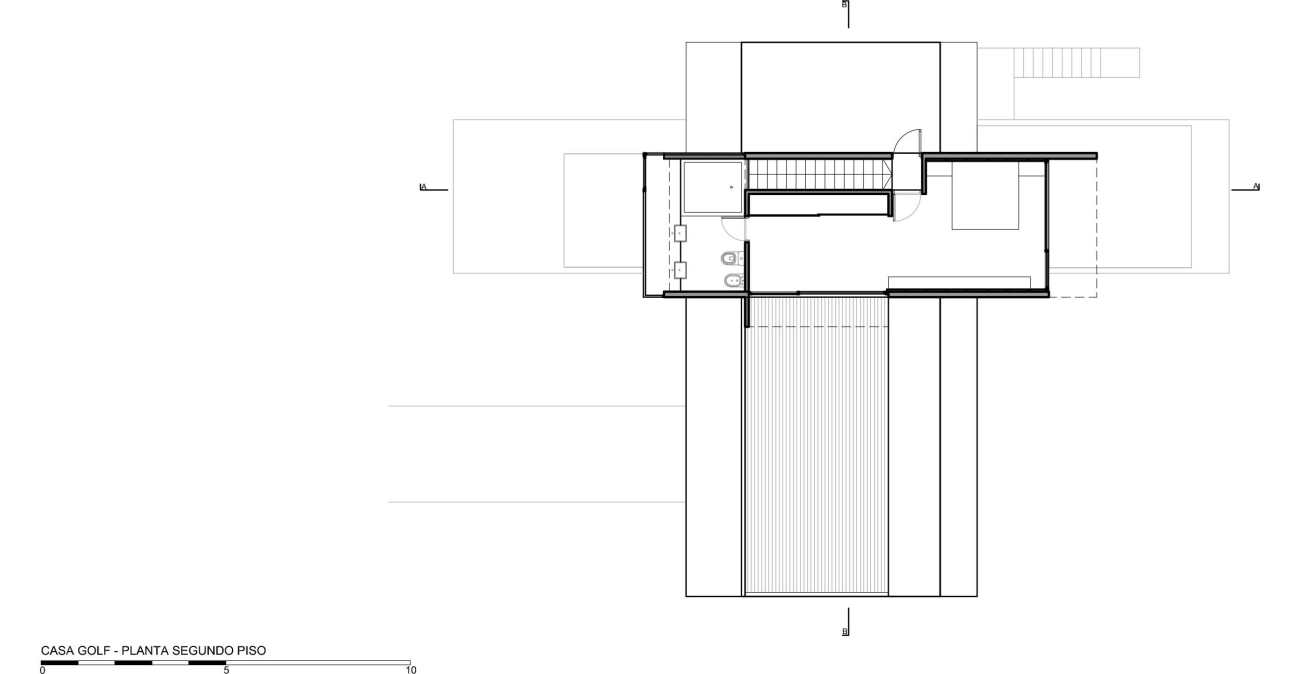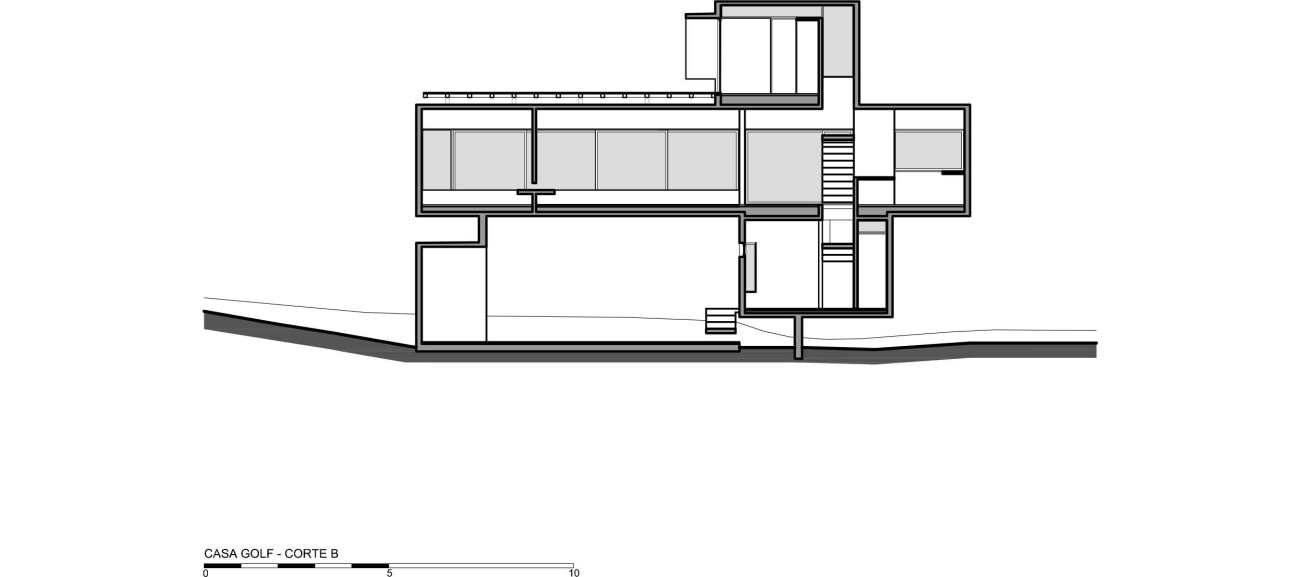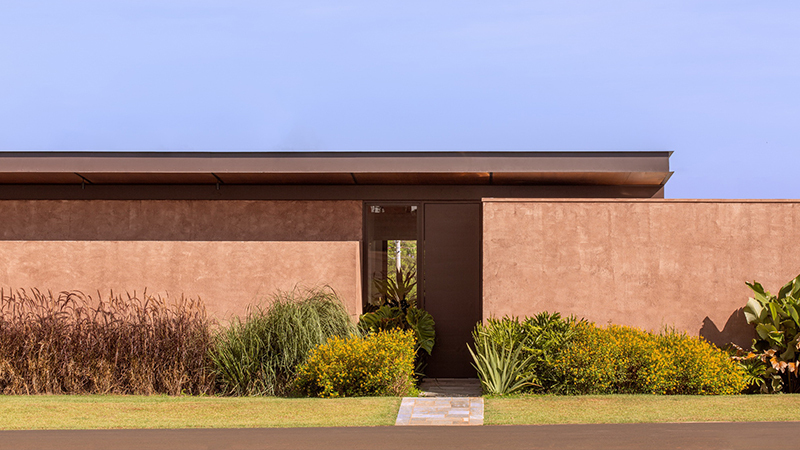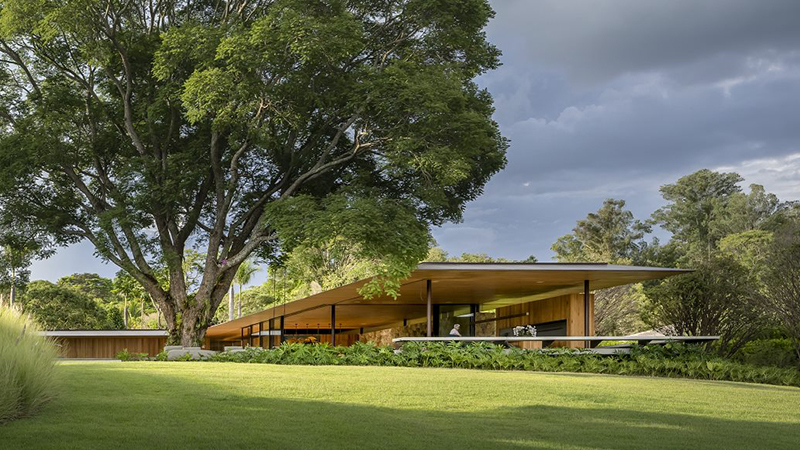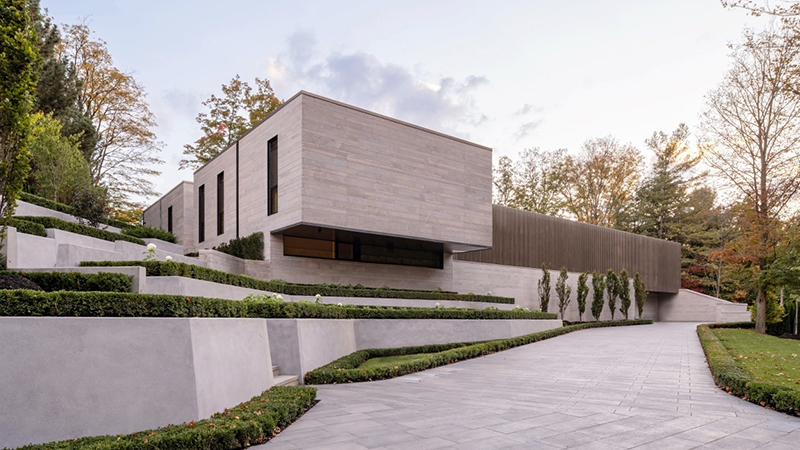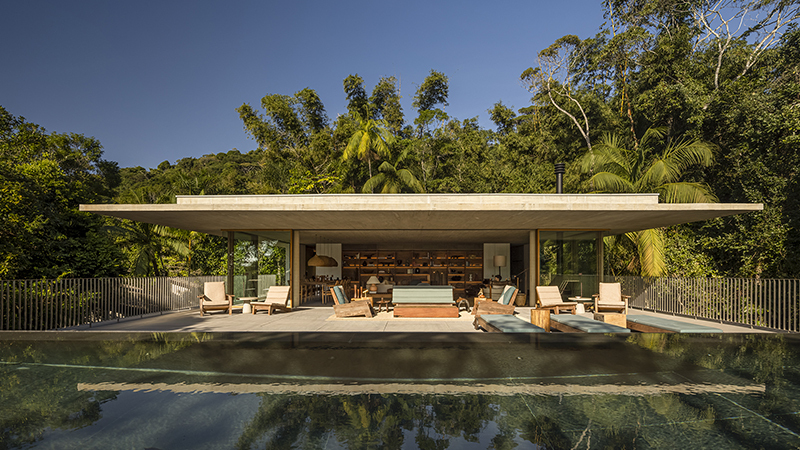| 公司: | Arquitecto Luciano Kruk | 类型: | 建筑 |
|---|---|---|---|
| 地区: | 阿根廷 | 标签: | 别墅私宅 |
项目Golf住宅位于Costa Esmeralda的中心,距海滨胜地Pinamar北部13公里。从地形上看,该地块位于邻近地区的最高区域,它的前后毗邻一个高尔夫球场,以及主要为野生的原生植被,构成了它的直接环境。最初,该地块被一个原始沙丘所包围,沙丘的坡度在远离街道的地方增长,工作室建议保留该沙丘。
Golf House is geographically located at the center of Costa Esmeralda, a neighborhood 13 km north of the seaside resort of Pinamar. Topographically lying on highest area of the neighborhood, both the front and the back of the plot of land adjoin a golf court that, along with the —mainly wild— native vegetation, compose its immediate surroundings. Originally, the plot of land was circumscribed by a virgin dune, the slope of which grew in height away from the street, and that the Studio proposed to preserve.
该项目包括一个一年四季都可以居住的度假屋,而且几乎不需要维护。客户要求设计三间次要卧室(两间共用一个外部浴室和一间套房),以及一间完全独立的主卧室,由另一间浴室提供服务,并与一个既可用作私人起居室又可用作绘画工作室的空间保持开放关系。夫妻区应该是一个宁静的庇护所,在视觉上与自然环境相连接,并与户外延伸密切相关。这个区域与公共社交空间应该在房子中起到主导作用。此外,还指出,原生植被应该被保留,并最大限度地利用令人叹为观止的景观。
The commission consisted of a vacation home that could be inhabited throughout all four seasons of the year and that required little maintenance. The brief called for three secondary bedrooms (two sharing an external bathroom and an ensuite one), and a master bedroom, completely independent of the others, served by another bathroom and in open relation with a space that could be used both as a private living room and a painting atelier. The couple’s area should be a tranquil shelter, visually connected with its natural environment and closely related to an outdoor extension. This area of the house, along with the communal social spaces should play the leading roles in the house. Also, it was stated that the native vegetation should be preserved and the breathtaking views maximized.
工作室提出了一个完全由外露的混凝土构成的房子,其高贵的美学表达允许与周围的环境进行尊重的对话。建筑策略旨在组织不同的功能需求,将其明确地归纳为三个纯粹的体量,彼此独立,并设置在不同的层面。
The Studio proposed a house entirely materialized in exposed concrete, whose noble esthetic expression allows a respectful dialogue with its surroundings. The architectural strategy aimed at organizing the different functional requirements distinctly grouped in three pure volumes oriented independently of one another and set at different levels.
后半部埋在沙丘下,下部是入口大厅和次要卧室。与对面的一个立方体一起作为仓库,它支撑着体量,注定要容纳家庭的动态活动。包含主卧室的第三个体量以最大的高度矗立,从而满足了客户对隐私的要求。
With its back half buried under the dune, the lower volume lodges the entrance lobby and the secondary bedrooms. Along with a cube standing opposite —serving as a warehouse—, it supports the prism destined to house the dynamics of the family’s activities. Containing the master bedroom, the third volume stands at maximum height, thus satisfying the client’s requirement of privacy.
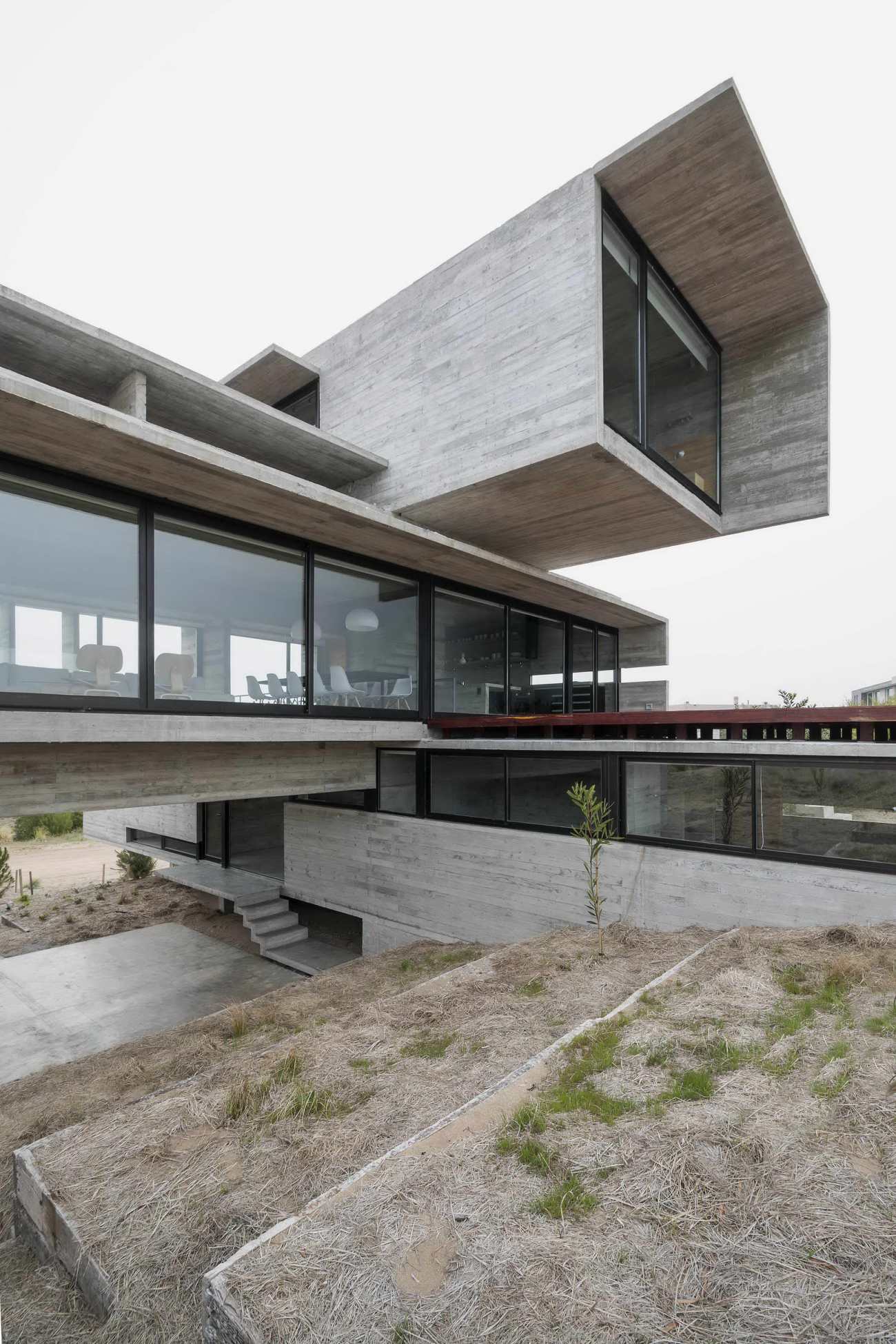 |  |
Regarding the general project, it aimed at exploiting the views, and at the same time avoiding a loss of the necessary preservation of the rooms’ intimacy, which is a characteristic challenge of contemporary glazed architecture. The volume housing the social areas is the most visually permeable one, not just due to the transparency of its skin, but also due to its being parallel to the street (contrary to the other two, that were set perpendicularly) and falling back into the lot.
社交空间占据了最大的建筑宽度,并上升到地块后方沙丘的最高层,从而获得了180°的高尔夫球场景观,开阔的街区景观,以及对街道的适当遮挡。为了更好地加强体量的私密性,决定在建筑与道路之间的空间内种植海松,并安装垂直遮阳板,这样也减少了西面的阳光照射到室内。同样,来自北方的阳光垂直入射由水平的屋檐--悬臂板--来控制,悬臂板与垂直隔断的整体连接方式与前面的檐口相同。足够独立于其他部分的第三体量,就像一门大炮,捕捉到了远处海平线的景色。
The social prism occupied the maximum building width and rose to the highest level of the dune at the back of the plot of land, thus gaining 180° views over the golf court, open views over the neighborhood, and an appropriate concealment from the street. In order to better reinforce the volume’s privacy, it was decided that maritime pines should be planted in the space lying between the building and the road and vertical sunshades be installed, that also reduced the sunlight incidence from the west inside. Likewise, the sunlight vertical incidence from the north was controlled by the horizontal eaves —cantilever slabs—, which monolithically joined to vertical partitions work in the same way as the brise-soleils at the front. Adequately independent from the rest, the third volume, like a cannon, captures views of the distant sea horizon.
 | 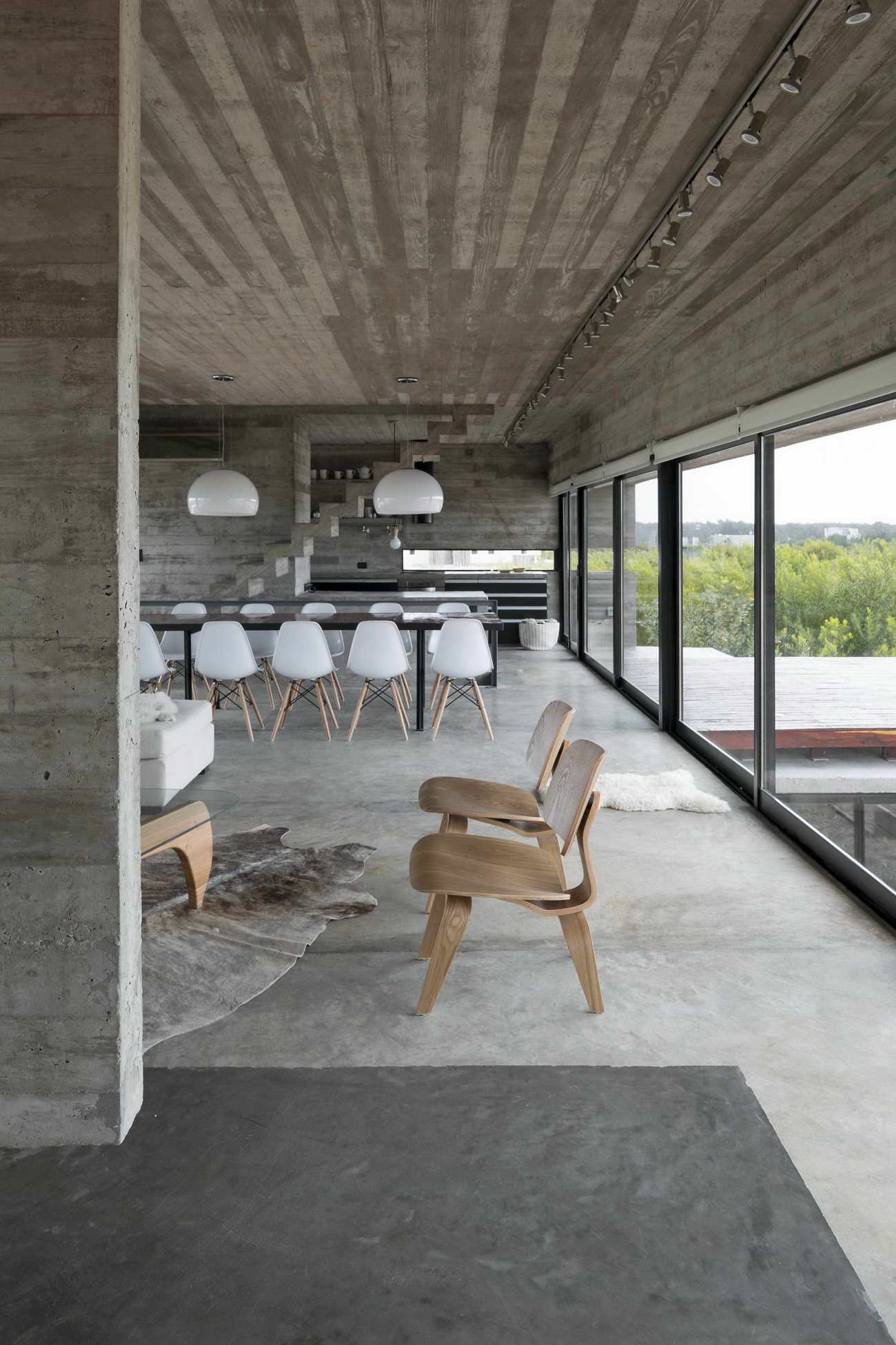 |
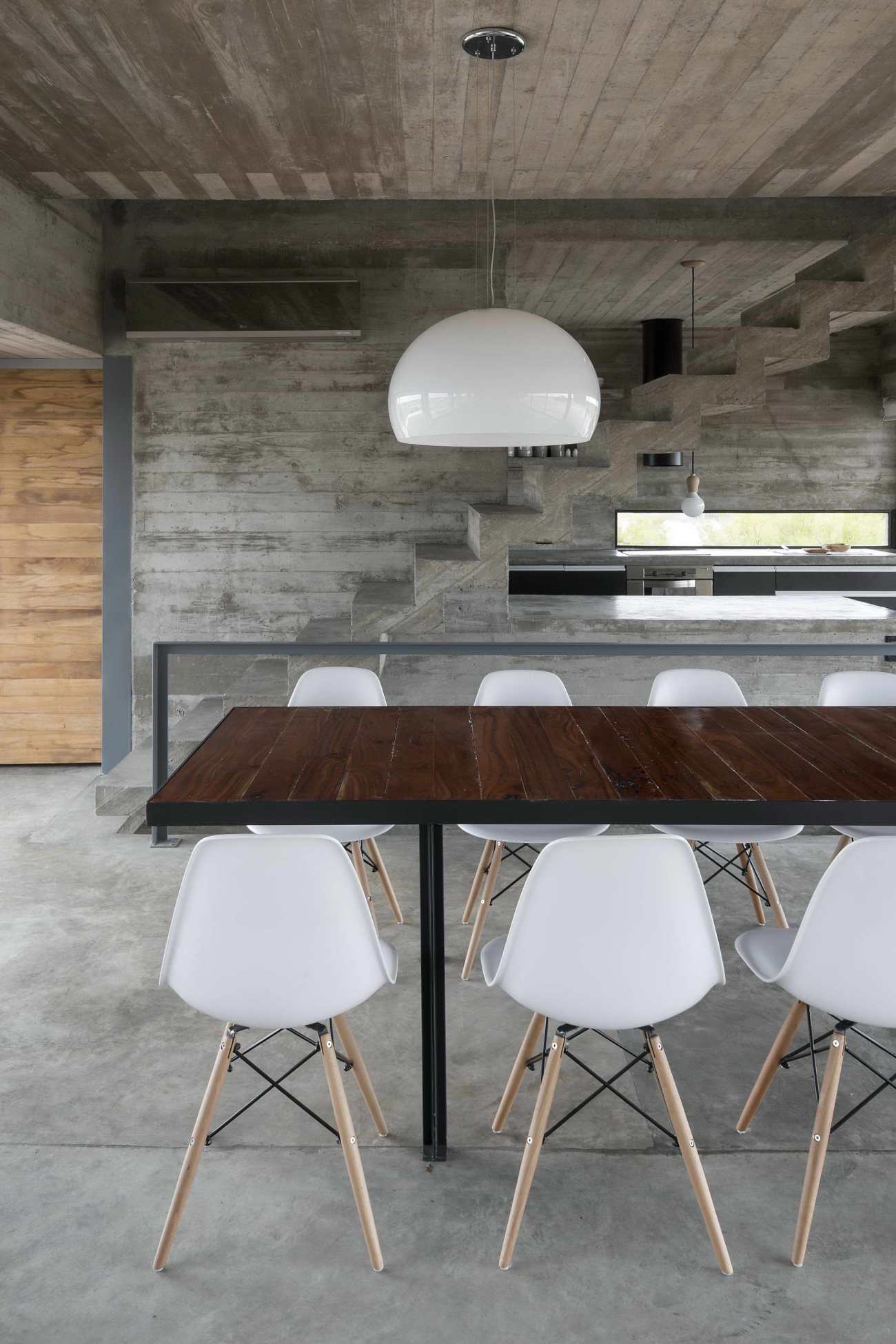 | 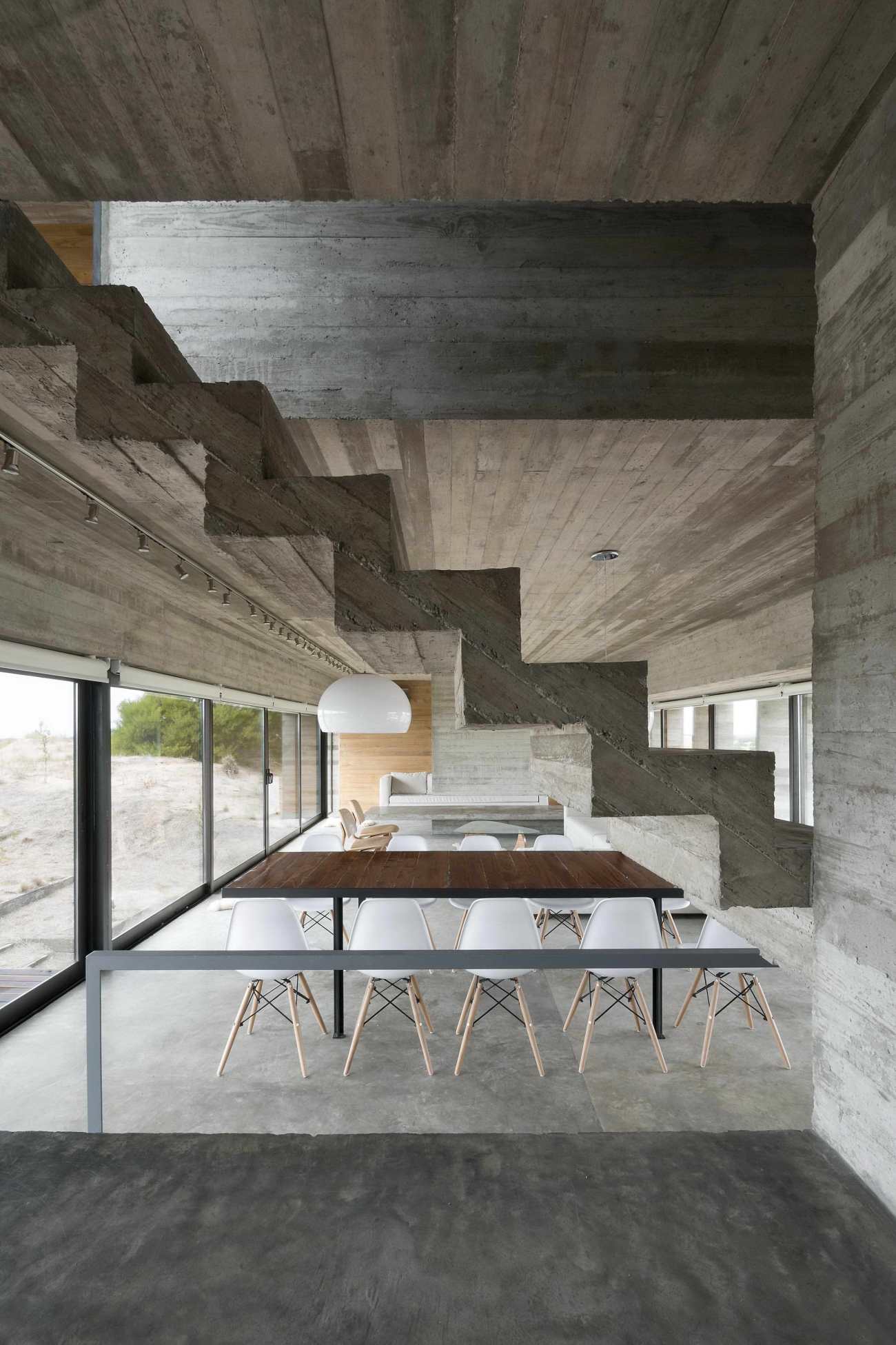 |
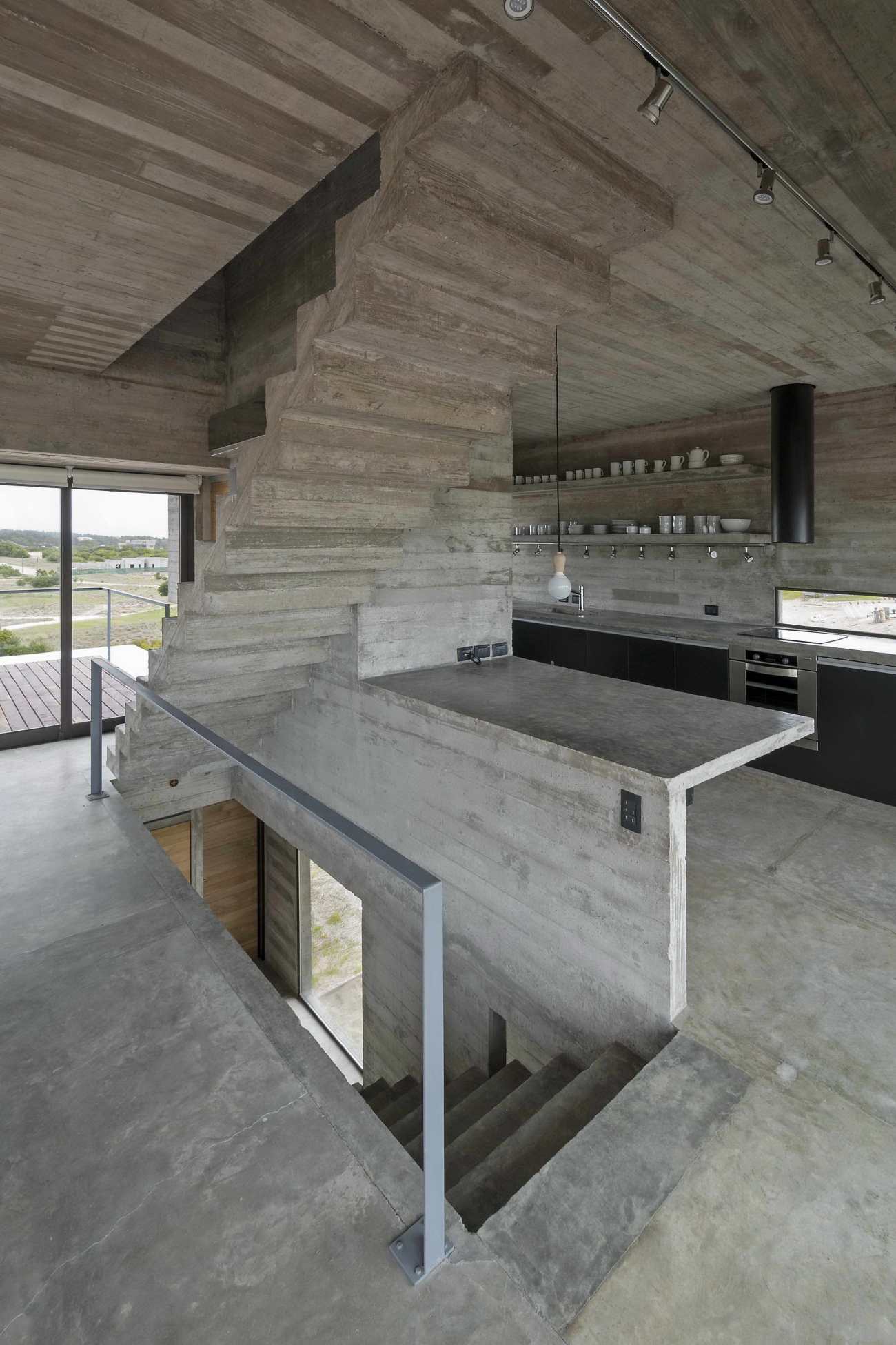 | 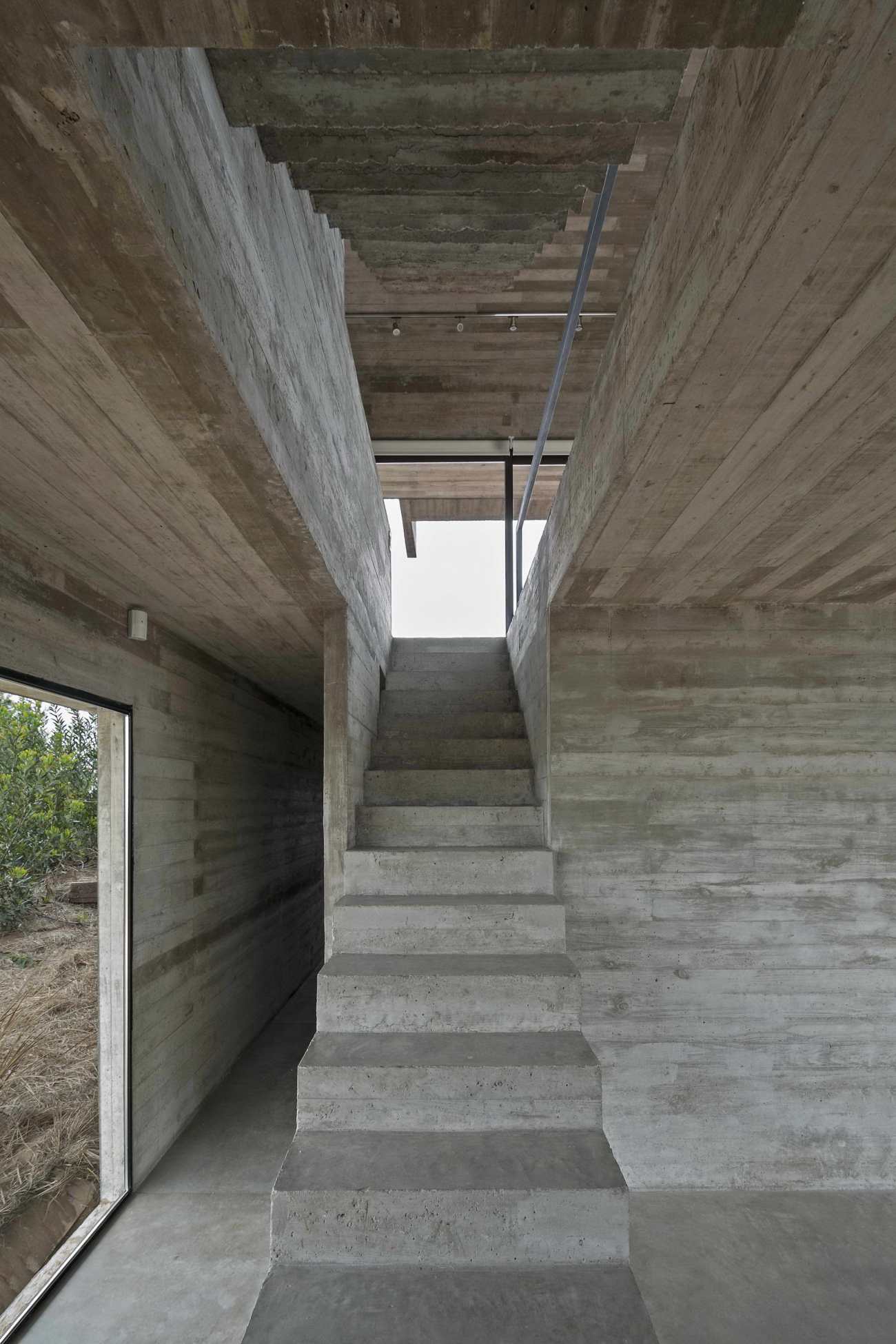 |
 | 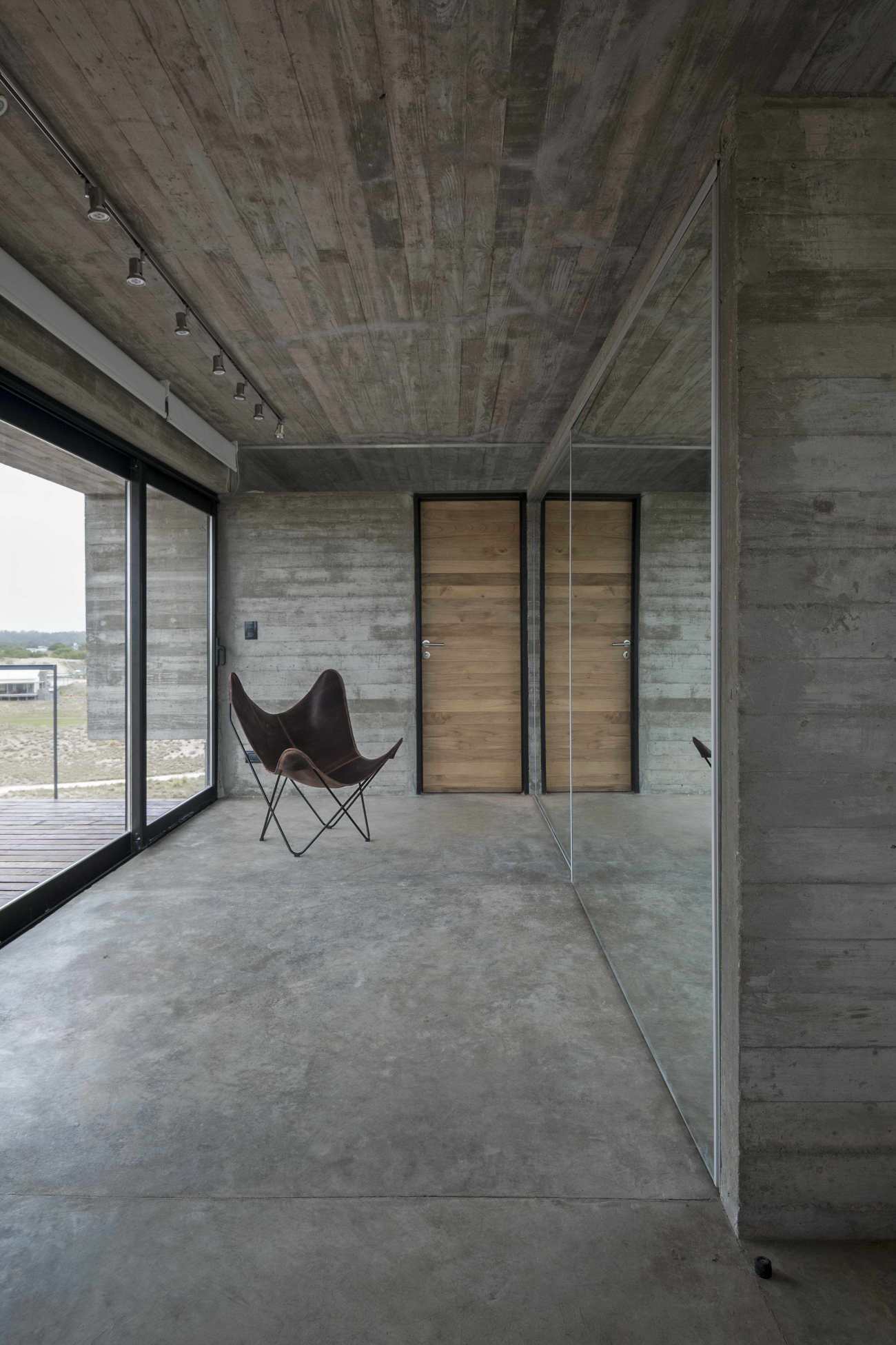 |
当社交空间向前方打开,成为一个阳台观景台时,另一侧更大的、更私密的扩展则将客厅和用餐区向外延伸。主卧室的体量悬挂在这个扩展区的大部分之上,提供了遮阳避雨的功能。每一个露台都是用魁拔木建造的,通过它们与混凝土的轻微分离,有助于降低它们所在房间的阳光入射。
While the social area opens frontwards into a terrace-lookout, a bigger, more private expansion on the other side projects the living room and dining area outwards. Providing shelter from the sun and the rain, the master bedroom’s volume hangs over most of this expansion. Every deck was built with quebracho wood and contributes to lower the sun incidence over the rooms they lie on through their being slightly detached from the concrete.
面对的墙壁较少受到太阳光线的影响(朝向西南),通过由kiri木材制成的内部涂层进行热隔离。这种涂层也被用于支撑床的靠背的分区上,因此混凝土的粗糙度在最私密的区域被软化。
The facing walls less affected by the sun rays (oriented to the southwest) were thermally isolated with an interior coating made of kiri wood. This coating was also used on the partitions that support the backrests of the beds, so that the concrete’s roughness is softened in the most private areas.
除了建筑本身提供的被动太阳控制之外,为了让项目全年都能按照专员的要求居住,还安装了分体式空调和地暖地板。体量的位置旨在将房子结构成一个由围绕着一个衔接轴线:垂直循环的体量组成的观景平台。它们的重叠和部分地下入口大厅的范围是为了降低高度和缓和整个建筑的视觉冲击。这种体量分布所要求的大跨度和悬挑,只有通过采用钢筋混凝土的结构特性才能实现。
Besides passive sun control provided by the house’s architecture itself, and in order to allow Golf House to be lived in throughout the year as the commissioner requested, Split air conditioners and radiating floors were installed. The prisms’ disposition aimed at structuring the house as a lookout-artifact composed of volumes set around an articulating axis: vertical circulation. The scope of their overlapping and the partially underground entrance lobby was to lower the height and moderate the visual impact of the whole building. The big spans and the overhangs called for by this volumetric distribution were only possible by means of the employed reinforced concrete’s structural properties.
▽场地平面图 Site plan
▽一层平面图 First floor plan
▽二层平面图 Second floor plan
▽剖面图 Section
▽剖面图 Section
Project Name: Golf House
Design Firm: Arquitecto Luciano Kruk
Location: Costa Esmeralda, Buenos Aires
Project Management: Arch. Ekaterina Künzel
Construction Site Management: Pablo Magdalena
Collaborators: Arch. Josefina Perez Silva- Arch. Andrés Conde Blanco-
Federico Eichenberg- Dan Saragusti, Isabelle Ducrest.
Text editing: Arq. Mariana Piqué
Land area: 1000m2
Built area: 274m2
Construction year: 2015
Photos: Daniela Mac Adden
更新日期:2020-11-11 15:17:28
非常感谢 Arquitecto Luciano Kruk 带来的精彩项目, 查阅更多Appreciations towards Arquitecto Luciano Kruk for sharing wonderful work on hhlloo. Click to see more works!

